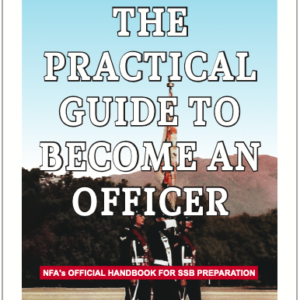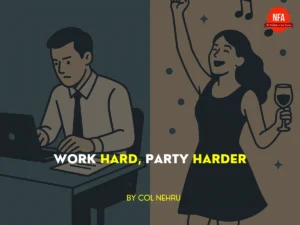INTRODUCTION:
BRICS is an economic consortium of 5 developing countries namely, Brazil, Russia, India, China and South Africa. The need for such a forum arose after the 2008 financial crisis. The developing world understood the importance of coming together in a bid to represent the global south and hence BRIC was formed in 2008, and 2 years later South Africa joined. BRICS currently accounts for 41% of the world’s population and 26% of the world’s GDP and also serves as an alternative to the G7 or Group of 7 developed countries which only have 10% of the world’s population but 43% of the world’s GDP. Another issue was that major financial institutions like the IMF and the World Bank were highly influenced by developed world policies and their approach was not friendly to the developing nations. So, the forum addressed this issue by forming the New Development Bank which provides monetary support and loans for various welfare and infrastructural projects to the member countries.
EXPANSION OF BRICS:
Since the inception all the founding members have benefited a lot from many BRICS initiatives and they were able to control their dependency on western world while simultaneously increasing their economic growth. Seeing the success of the group, many of the developing countries, who wanted a better alternative to fund infrastructure projects in their country, have requested to join the group. According to the South African President, as many as 40 nations have formally requested to join the BRICS. The expansion of the group was also being discussed by the leaders for quite a long time but due to difference in opinions and conflicts they weren’t able to reach a consensus. Finally during the recent BRICS summit in Johannesburg, requests from six countries, namely Argentina, Saudi Arabia, Ethiopia, UAE, Egypt and Iran, were accepted and they are set to join the consortium from 1st January next year paving the way for a new economic bloc countering western influence.
INDIA NOW:
India’s present concern: India shares a cordial relationship with all the BRICS nations except China. Although the 2 nations are trading partners, China’s occupation of Indian land, border clashes, Chinese aggression and proposed China Pakistan Economic Corridor undermining India’s territorial integrity, are major roadblocks in normalising their relationship. Just recently after the BRICS summit China released a new “standard map” which claimed Indian territory as Chinese territory. India in the past had tried to appease China but it has drastically failed and now the Indian government knows that extending the olive branch won’t help. China has the largest economy among the BRICS nations so it wants to dominate the grouping in its own way. The only reason India was blocking the BRICS expansion earlier was due to the possibility of China’s increased influence in the group by adding nations from its influence
circle.
Dollar or Yuan: China is proposing a common currency as a step towards DeDollarization. Since a new currency will be based on some older currency and Yuan is most likely to be that currency, which for India is not a better alternative than Dollar and is likely to create more problems.
India’s relationship with other nations: India has a strong strategic partnership with Russia and Brazil since 2000 and 2006 simultaneously. Russia is one of the oldest and trusted allies of India and also an important trade partner. India, South Africa and Brazil form the IBSA trilateral defence cooperation and IBSAMAR, a military exercise,is conducted quadrennial. Argentina can now become the importer of India’s defence machinery talks are underway for
LCA Tejas for Argentina. India recently signed a strategic partnership with Egypt and Saudi Arabia in 2023. UAE and Saudi Arabia are part of the proposed India Middle East Europe Economic corridor. During the recent visit of Saudi Crown Prince, India also signed many MoUs like, connecting the power grid of both the nations through undersea cable.
INDIA and future BRICS+:
India as a voice of Global South: Recent addition of African Union without a debate among G20 nations and agreeing to New Delhi’s Declaration cemented India as a voice of Global South and a potential representative. India’s vision of a developed, sustainable, advanced and global south can be achieved by uniting BRICS+ under a single umbrella and working towards a single goal of economic growth, promoting green energy, controlling carbon emissions, curbing terror funding, using AI in health sector, and distributing loans to Non-BRICS+ developing countries as well. Expansion of BRICS is inevitable so India should advocate for ASEAN, African Union and smaller nation islands membership.
Being Non-aligned: India’s policy since its independence is non-aligned which has immensely helped India to look after its own national interest. Similarly like India, there are many nations that don’t want to be in any bloc and focus on solving problems which affect them like climate change, inflation, poverty so India can be their representative.
India and China: India is the only nation within BRICS+ who can resist and block China’s rising influence in the group which may deviate the group from its original purpose. The major concern being China may use this group against the US for its own political gain. Although BRICS was originally made as a partnership of the global south but soon it is going towards being anti-west but India needs to take the lead and bring back the consortium to follow their original vision of representing the global south.
CONCLUSION:
Many think tanks believe that this century is India’s century. In this era of multipolar world and globalisation India can emerge as the voice of the global south and can represent the developing world so that the problems of these nations are also addressed. It can be an example to other nations about how non alignment can benefit the national interests. India can bring balance among the west and “anti-west” and not let any bloc influence or hamper the other bloc’s progress. In order to solve global problems like climate change, terrorism, sustainable growth, the world needs to unite and work as one- “Vasudeva Kutumbakam”, one earth, one family, one future.
By: Manoj Pandey

Manoj Pandey
NFA Weekly Blog competition winner








